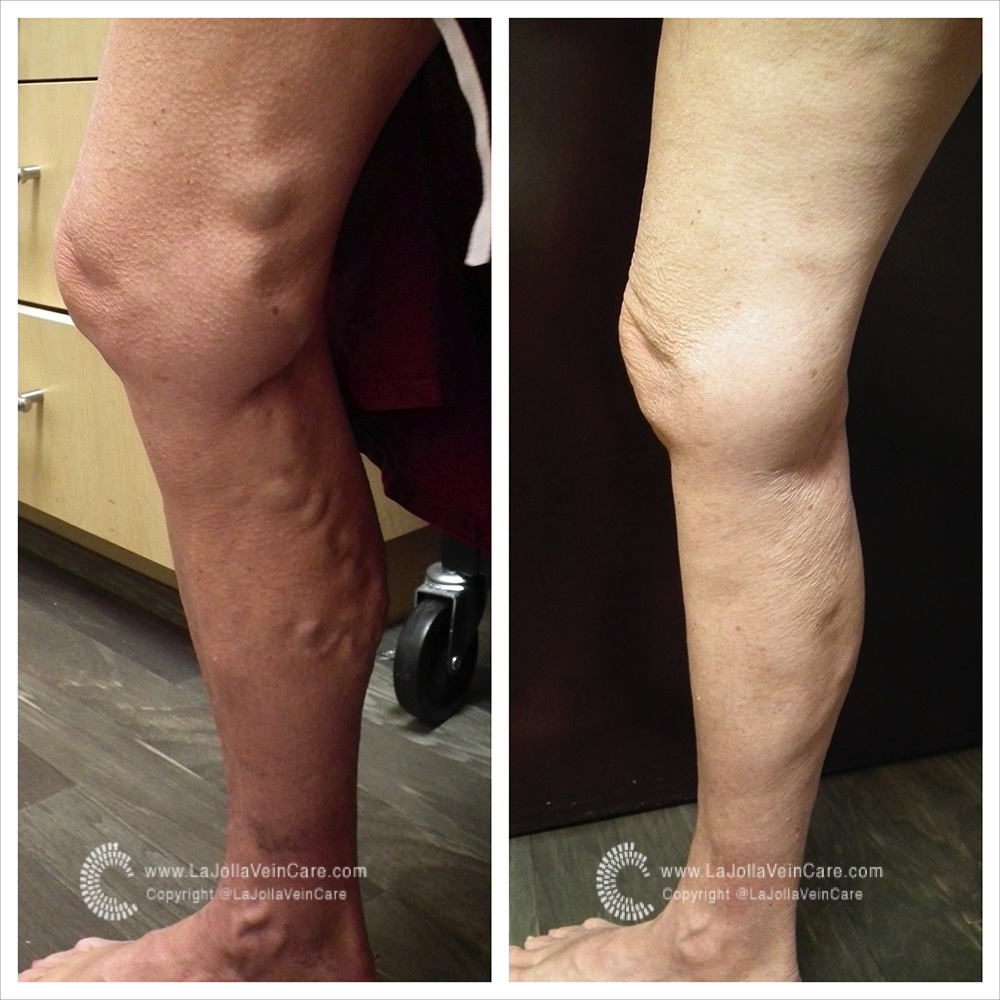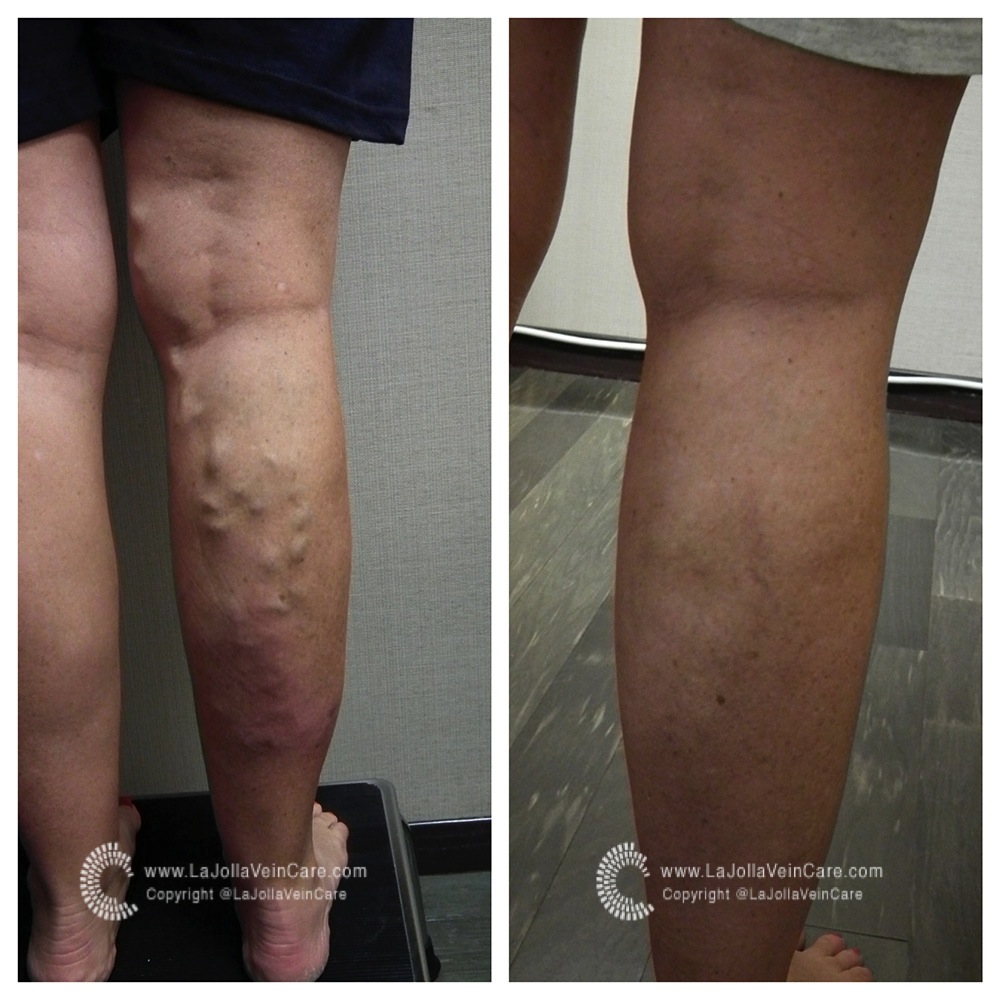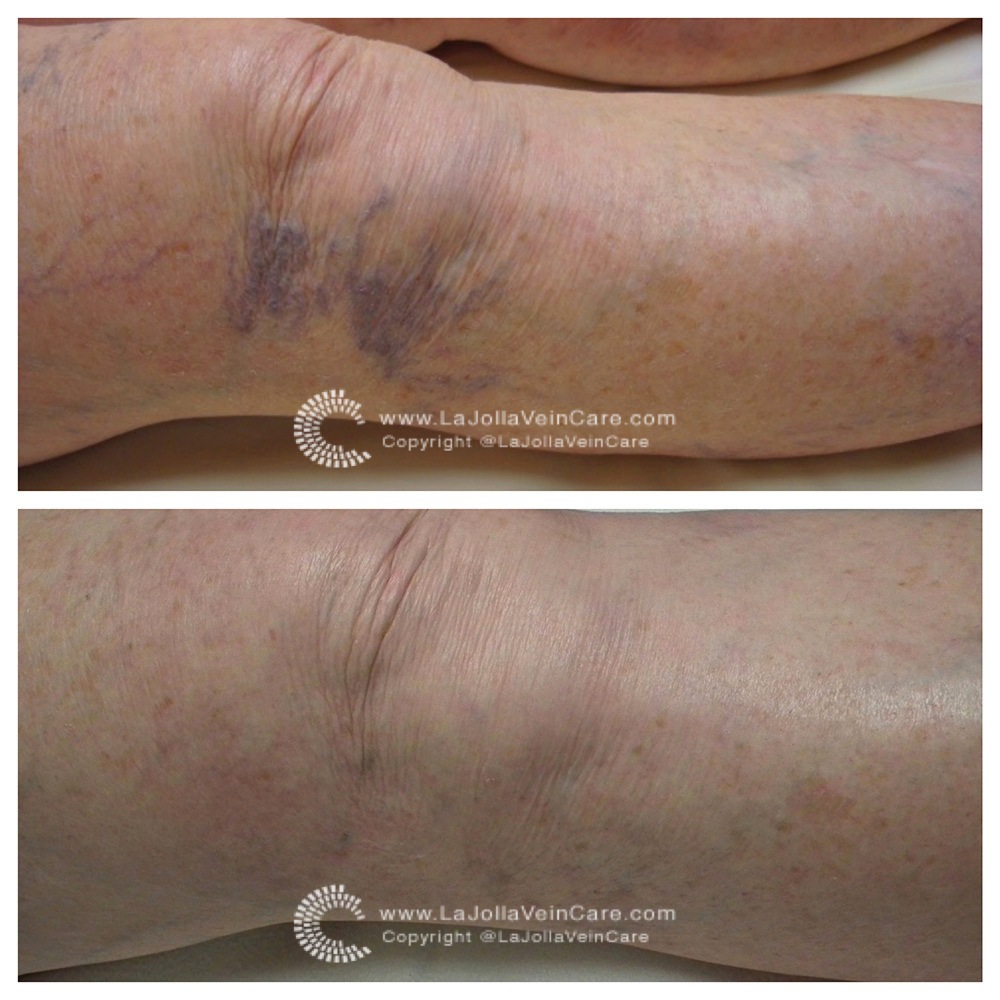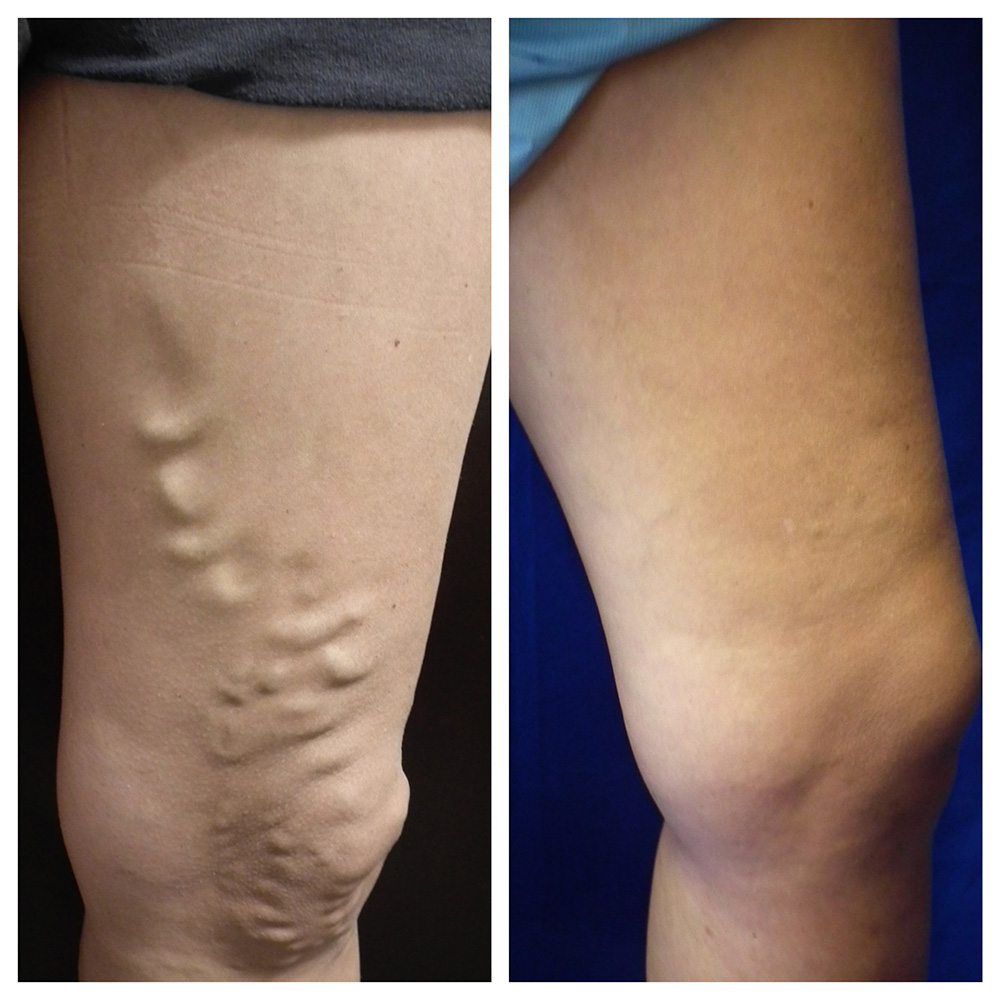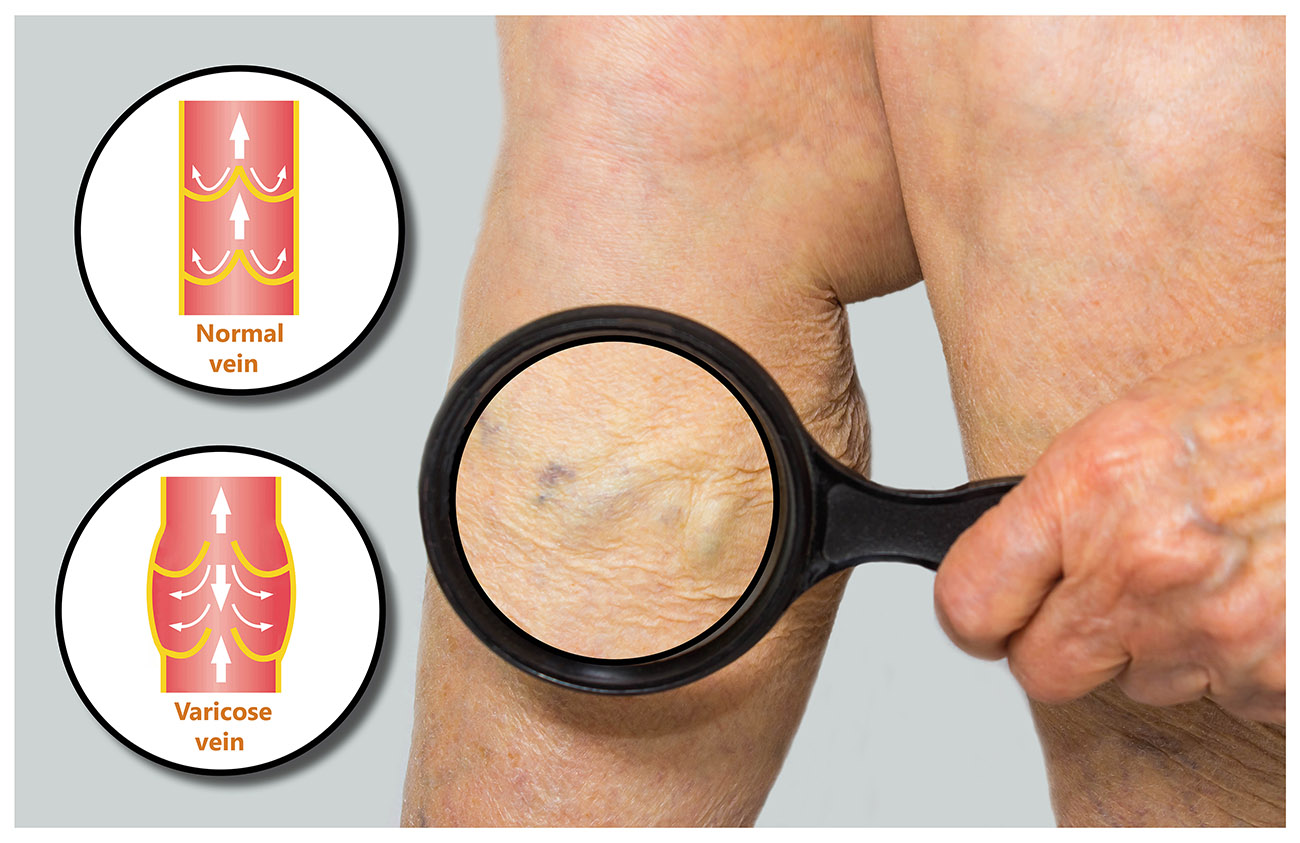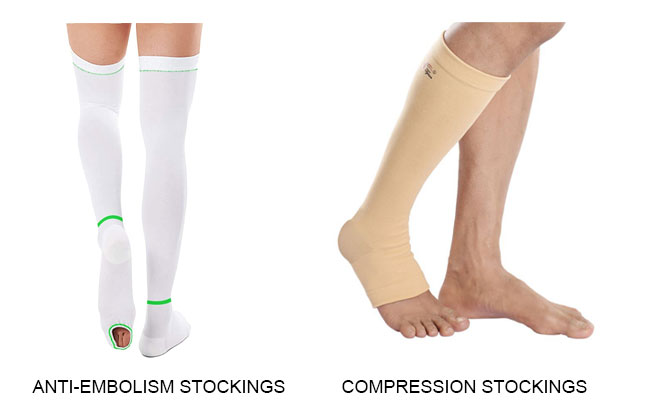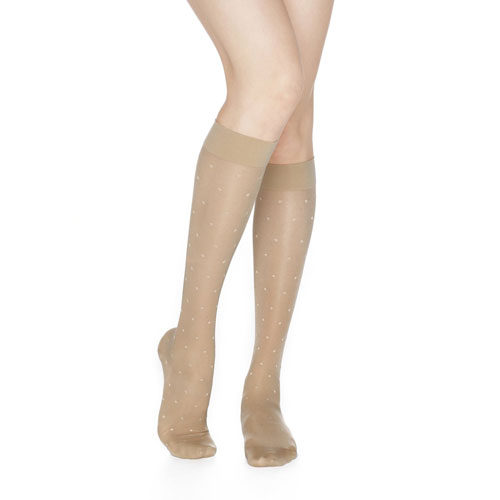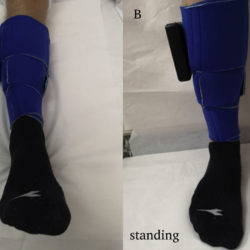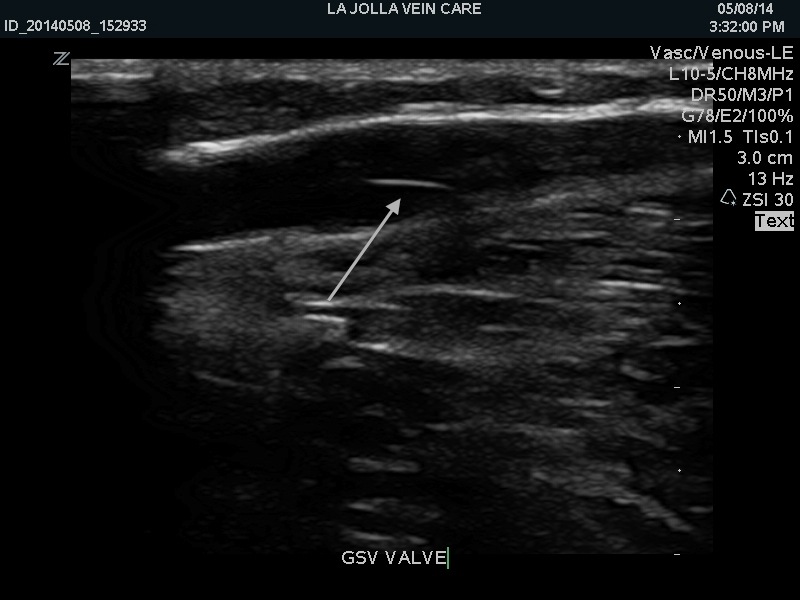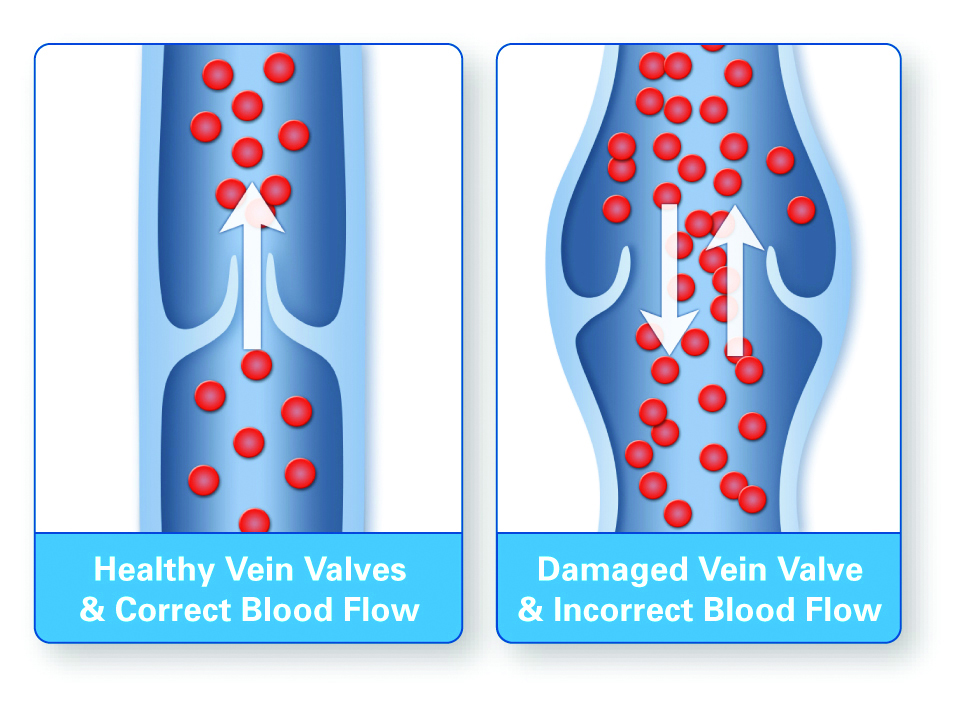What’s So Great About the Great Saphenous Vein?
La Jolla Vein Care2022-04-24T23:30:58-07:00
The great saphenous vein (GSV), previously referred to as the long saphenous vein, is a superficial leg vein that runs from the top of the thigh near the groin, down the inner thigh all the way to the inner ankle. The top blue arrow in this diagram points to the location of the great saphenous vein.
The Great Saphenous vein is responsible for varicose veins about 80% of the time. When varicose veins appear in the inner thigh or calf areas, the GSV is often the culprit (see picture). The other superficial vein is largely responsible for varicose veins in the small saphenous vein. The small saphenous vein (SSV) runs along the back of the calf. The SSV was previously referred to as the short saphenous vein. Varicose veins on the backside of the leg are often caused by leaky valves within the small saphenous vein.

